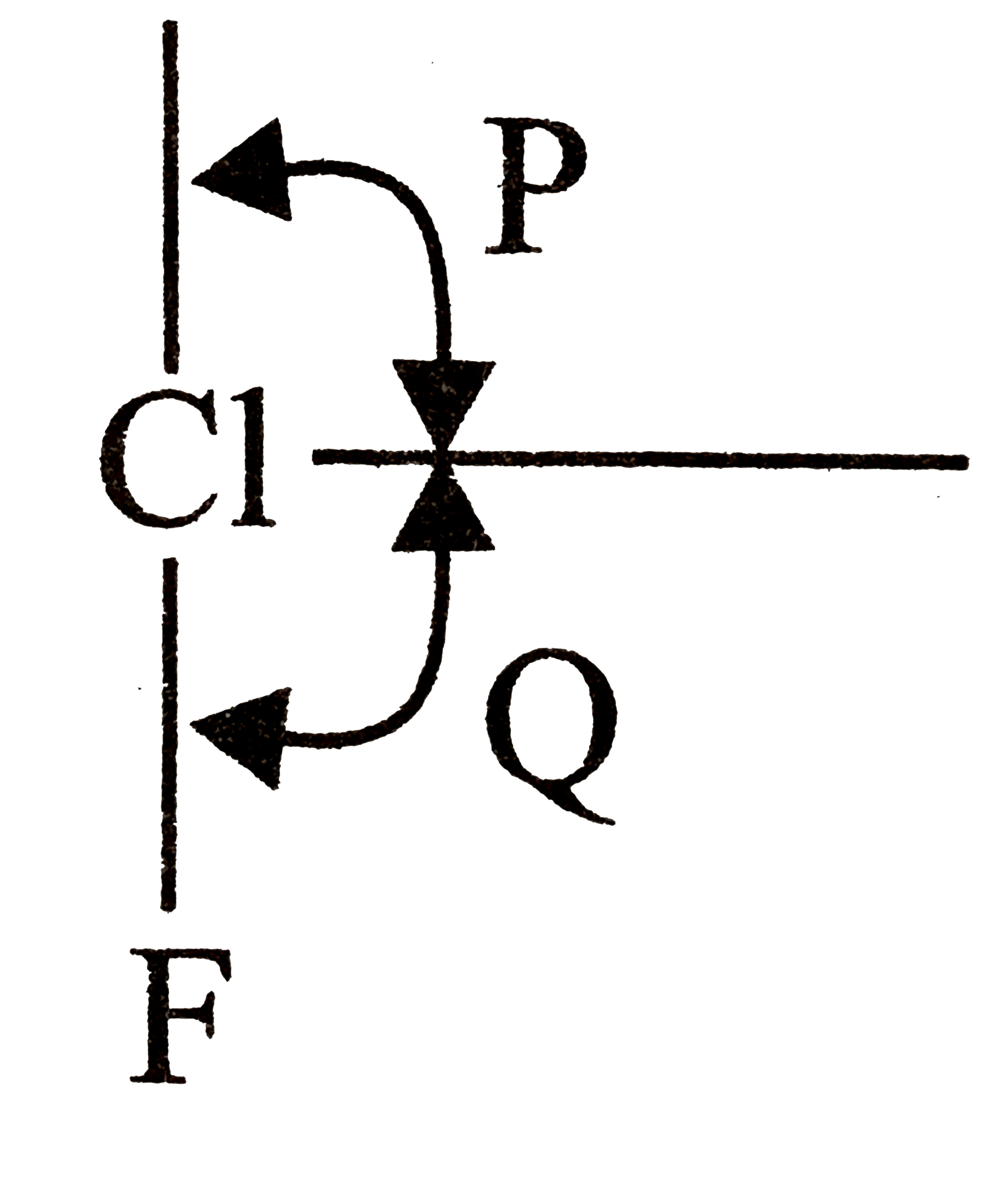Assertion : All F - S - F angle in SF4 are greater than 90∘ but less than 180∘.
Reason :The lone pair -bond pair repulsion is weaker than bond pair -bond pair repulsion
Statemetn-1 is true, Statrment-2 is also true, Statement -2 is the correct explanation of statement-1
Statement -1 is true , Statement 2 is also true, Statement-2 is not the correct explanation of Statement-1
Statement-1 is true, Statement-2 is false.
Statement-1 is false, Statement-2 is true.
The correct Answer is:c
To solve the question, we need to analyze both the assertion and the reason provided.
Step 1: Analyze the Assertion
The assertion states that "All F - S - F angles in SF4 are greater than 90° but less than 180°."
- Understanding SF4 Structure:
- Sulfur (S) has 6 valence electrons. In SF4, it forms 4 bonds with fluorine (F) atoms and has 1 lone pair of electrons.
- The molecular geometry of SF4 is based on a trigonal bipyramidal arrangement due to the presence of 4 bond pairs and 1 lone pair.
- Bond Angles:
- In a trigonal bipyramidal structure, the ideal bond angles are 120° in the equatorial plane and 90° between the axial and equatorial positions. However, the presence of the lone pair affects these angles.
- The lone pair occupies one of the equatorial positions, causing the bond angles between the fluorine atoms to be slightly distorted.
- The F-S-F bond angles in SF4 are indeed greater than 90° and less than 180°. For example, the angle between two equatorial fluorine atoms is approximately 102°, and the angle between an axial and an equatorial fluorine atom is around 173°.
Conclusion for Assertion: The assertion is True.
Step 2: Analyze the Reason
The reason states that "The lone pair-bond pair repulsion is weaker than bond pair-bond pair repulsion."
- Understanding Repulsions:
- According to the Valence Shell Electron Pair Repulsion (VSEPR) theory, the repulsion between electron pairs is ranked as follows:
1. Lone pair-lone pair repulsion is the strongest.
2. Lone pair-bond pair repulsion is weaker than lone pair-lone pair but stronger than bond pair-bond pair.
3. Bond pair-bond pair repulsion is the weakest.
- Evaluating the Reason:
- The statement in the reason is incorrect because it misrepresents the strength of the repulsions. Lone pair-bond pair repulsion is actually stronger than bond pair-bond pair repulsion.
Conclusion for Reason: The reason is False.
Final Conclusion
- The assertion is true, and the reason is false. Therefore, the correct answer is that the assertion is true, but the reason is false.
The assertion states that "All F - S - F angles in SF4 are greater than 90° but less than 180°."
- Sulfur (S) has 6 valence electrons. In SF4, it forms 4 bonds with fluorine (F) atoms and has 1 lone pair of electrons.
- The molecular geometry of SF4 is based on a trigonal bipyramidal arrangement due to the presence of 4 bond pairs and 1 lone pair.
- In a trigonal bipyramidal structure, the ideal bond angles are 120° in the equatorial plane and 90° between the axial and equatorial positions. However, the presence of the lone pair affects these angles.
- The lone pair occupies one of the equatorial positions, causing the bond angles between the fluorine atoms to be slightly distorted.
- The F-S-F bond angles in SF4 are indeed greater than 90° and less than 180°. For example, the angle between two equatorial fluorine atoms is approximately 102°, and the angle between an axial and an equatorial fluorine atom is around 173°.
The reason states that "The lone pair-bond pair repulsion is weaker than bond pair-bond pair repulsion."
- According to the Valence Shell Electron Pair Repulsion (VSEPR) theory, the repulsion between electron pairs is ranked as follows:
1. Lone pair-lone pair repulsion is the strongest.
2. Lone pair-bond pair repulsion is weaker than lone pair-lone pair but stronger than bond pair-bond pair.
3. Bond pair-bond pair repulsion is the weakest.
- The statement in the reason is incorrect because it misrepresents the strength of the repulsions. Lone pair-bond pair repulsion is actually stronger than bond pair-bond pair repulsion.
- The assertion is true, and the reason is false. Therefore, the correct answer is that the assertion is true, but the reason is false.
Similar Questions
Knowledge Check
Assertion :- The observed bond angle in NH3 molecule is less than 109∘28'.
Reason :-In ammonia molecule, the bond pair-bond pair repulsion is more than the lone pair-bond pair repulsionAIf both Assertion and Reason are CORRECT and Reason is the CORRECT explanation of the AssertionBIf both Assertion and Reason are CORRECT but Reason is not the CORRECT explanation of the Assertion.CIf Assertion is CORRECT but Reason is INCORRECT.DIf Assertion is INCORRECT but Reason is CORRECT.
Assertion (A): CIF is more reactive than F2.
Reason (R ): The F-F bons is weaker than CIF bond.
View SolutionThe number of near about 90∘ angles between bond pair - bond pair of electrons in BrF5 is :
View SolutionAssertion : bond angle H2O is less than the normal tetrahedral bond angle.
Reason : Lone pair-lone pair repulsion decreases bond angle.
View SolutionAssertion (A) : P4 is more reactive than N2
Reason (R) : P−P bonds are relatively weaker than N≡N
View SolutionThe maximum number of 90∘ angles between bond pair-bond pair of electrons is observed in
View SolutionAssertion (A): Sodium metal is softer than potassium metal.
Reason (R ): Metallic bond in potassium is weaker than in sodium.
View SolutionIn NO−3 ion, the number of bond pair and lone pair of electrons on nitrogen atom are:
View Solution

 F bond angle p is equal to the bond angle Q but not precisely equal to
F bond angle p is equal to the bond angle Q but not precisely equal to